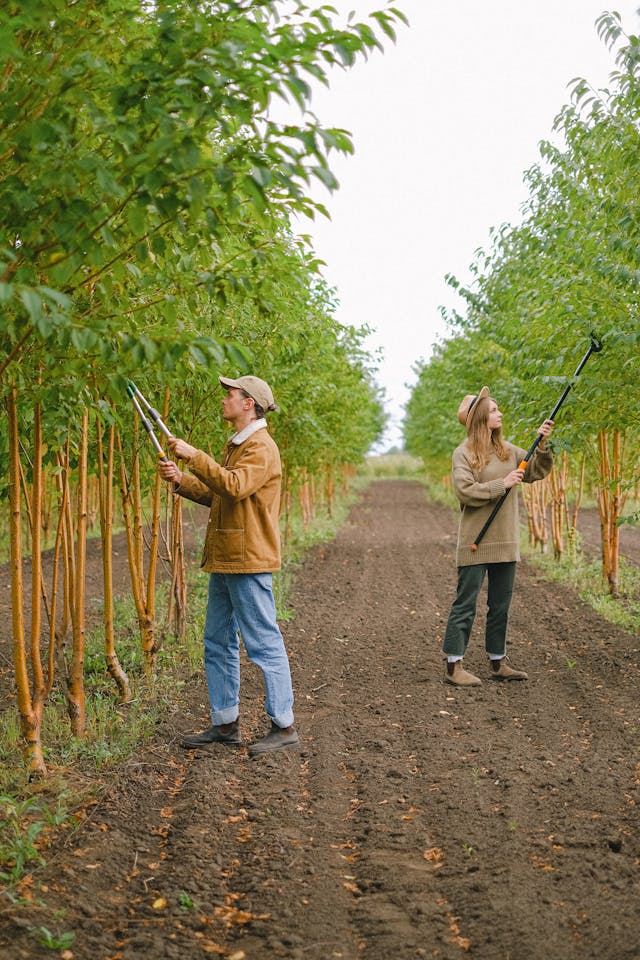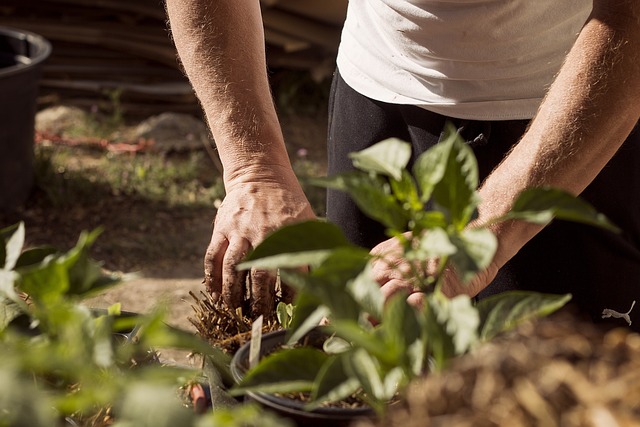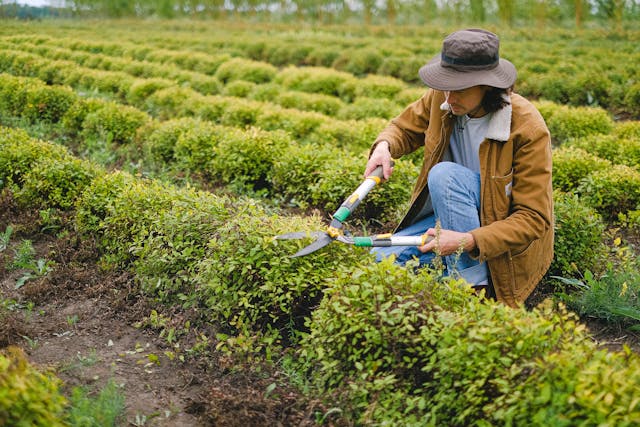Every landscape needs tree and shrub. Shade, beauty, and wildlife habitat all come from them. They also improve air quality. They reduce noise pollution and fight climate change by storing carbon dioxide.
Tree Care and Maintenance
You need to care for them well. Their long lives and good health depend on this. Follow the suggested planting, watering, fertilising, and trimming instructions. They will help your trees and plants grow. They will also make your outdoor area look more beautiful.
Different species of trees and shrubs have varying maintenance requirements. Before you choose, consider factors such as watering needs. Also, consider pruning needs and susceptibility to pests and diseases. Choose species that align with your maintenance capabilities and preferences.
Select Trees and Shrubs for Your Landscape
Select suitable species for your climate and soil. Do some study on the local soil and climate before choosing plants for your garden. Select species appropriate to the soil and climate of your area. This will ensure they can thrive there.

Consider Growth Habits and Mature Size
Pick trees and shrubs that grow well and are big when they’re mature. Your landscape should have species that fit the space. They won’t outgrow it, causing overcrowding or obstruction.

Plant Trees and Shrubs
Plant trees and other plants in the right places to change your landscape. Besides making their surroundings more attractive, they’re good for the environment.
Select and Prepare the Site
Choose a good site for your trees and shrubs. Consider factors like sunlight, soil drainage, and distance to buildings. Prepare the planting hole for the species. Give the roots enough space.
Proper Planting Techniques
When planting trees and shrubs, handle them carefully. This is to protect the stems and roots. Make sure the root flare is at or just above the soil’s surface when planting them at the proper depth. Backfill the hole with dirt.
Mulch and Water
For the ground beneath recently planted trees and plants, apply organic mulch. It will keep the soil moist, stop weed growth, and protect roots from bad weather. Water newly planted trees and shrubs often. Do this, especially when it’s dry. This will help them grow healthy roots.
Essential Care Practices for Trees and Shrubs
Discover the vital care practices for trees and shrubs. They are necessary for their long life and good health. We cover everything to give you the knowledge you need to become a green thumb expert, from planting to pruning.
Water Requirements
Tree and shrub health depends on regular watering. Water the soil sparingly and deeply, allowing it to dry out in between. You want to avoid overwatering since it might lead to root rot.
Fertilisation Needs
Give trees and shrubs extra nutrients through regular fertilisation. Take special care of them if their soil is weak or exhausted. Apply a balanced fertiliser to your shrubs and trees. It is formulated specially for them. Apply it as the manufacturer instructs.
Prune on Time
Trees and shrubs need pruning to stay healthy. Use sharp, clean tools. Use them to make precise cuts. Prune based on each species’ needs. Professional tree surgeons have the right equipment and tools. Timing is critical when pruning. Dormant season pruning is best for most species.
Identify Plant Pests and Diseases
Look for signs of disease and pest infestation in trees and shrubs. Find and fix problems fast. This stops them from spreading and causing big damage. Consider using integrated pest management (IPM). It can minimise the use of chemical pesticides.
Seasonal Tree and Shrub Maintenance
- A spring tree and shrub inspection is a good opportunity to assess the health of the plants. Cut dead or broken branches. Add fertiliser if needed. Watch for signs of new growth and budding.
- During summer, focus on watering. Mulch can also assist plants and bushes tolerate the heat. Take quick action if you see any signs of disease or vermin.
- Continue monitoring trees and shrubs for stress and disease in the fall. Consider adding mulch. It will protect roots from freezing and swings in moisture.
- During winter, do less pruning. Instead, focus on protecting trees and shrubs from cold and harsh weather. Consider wrapping vulnerable plants with burlap or other protective materials to prevent damage.
Common Tree and Shrub Problems
Learn to recognise common pests. They affect trees and shrubs. Spider mites, scale insects, and aphids are a few instances. Regularly inspect plants for evidence of infestation. To get rid of pests, use efficient pest management techniques like insecticidal soap or horticultural oil.
Watch for signs of common diseases. They can affect trees and shrubs. These diseases include powdery mildew, leaf spot, and root rot. Good sanitation, cultural care, and timely fungicide treatment can prevent disease. They can also control outbreaks.
Weak trees and shrubs can happen from extreme weather, intense heat, and poor soil. There’s a higher risk of diseases and pests. Take steps to reduce environmental stress. Do this by adding water, improving soil, and protecting from harsh weather.
Health and Beauty of Trees and Shrubs
Consider extra care practices. Trees and shrubs in your landscape will be healthier and more beautiful with these treatments. These may include regular soil tests. Also, proper pruning of ornamental plants. And, strategic plant placement to maximise their beauty.
Fertile soil is necessary for trees and bushes to thrive. Add organic components to your soil to make it healthier. Also, aerate compacted soil and use mulch. They improve soil structure, fertility, and moisture retention.
Increase biodiversity in your yard. Use native species when possible. They support local ecosystems and attract helpful insects and birds.
In Conclusion
The rewards of caring for trees and shrubs are endless, but it takes dedication, knowledge, and effort. Follow the tips in this guide. They will help you grow healthy, vibrant landscapes. The landscapes will give beauty, shade, and habitat for years to come.




